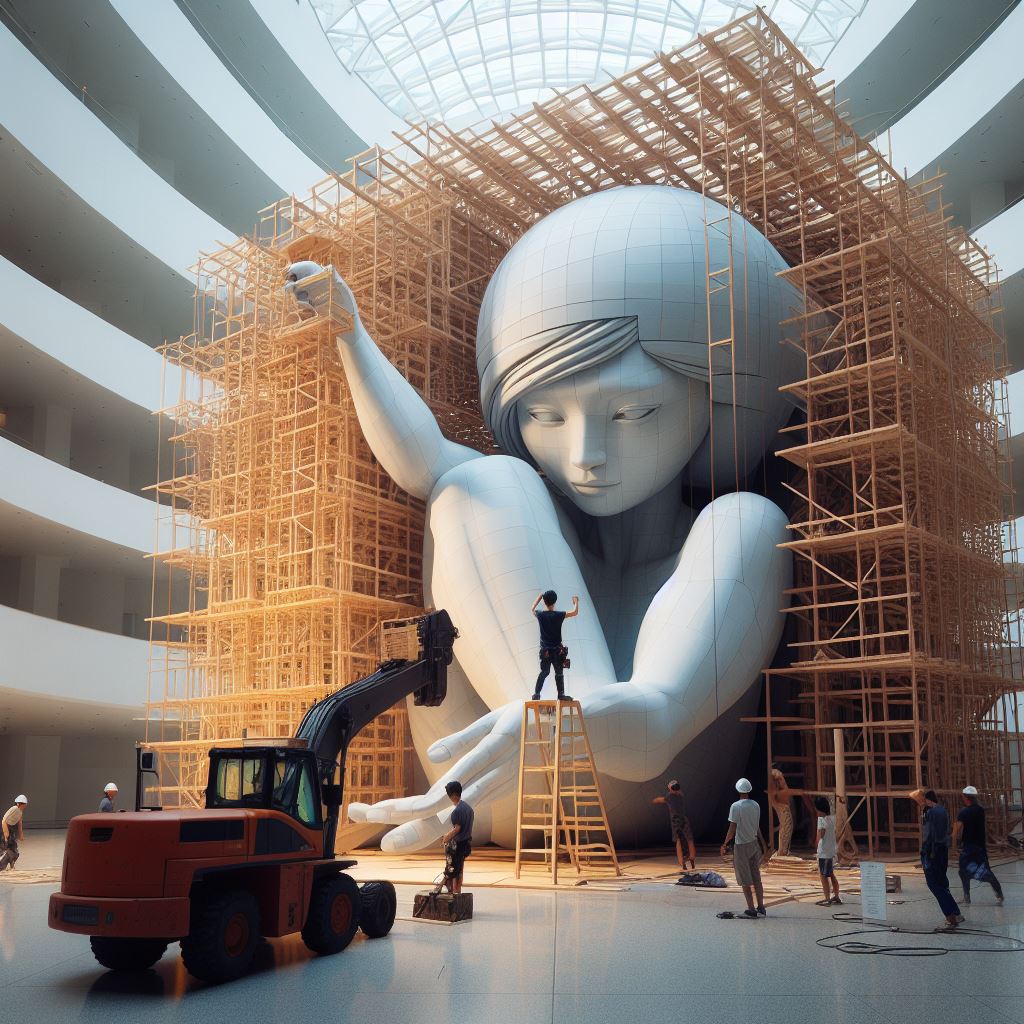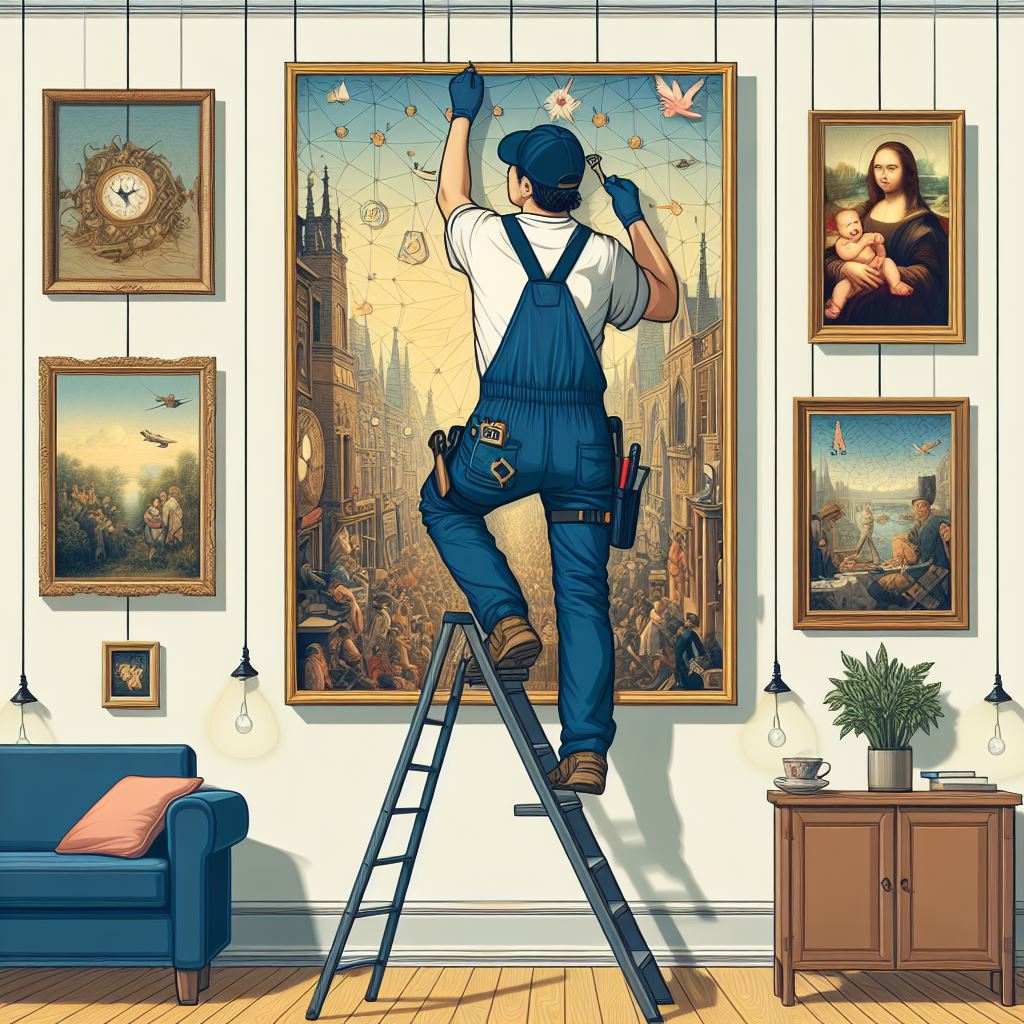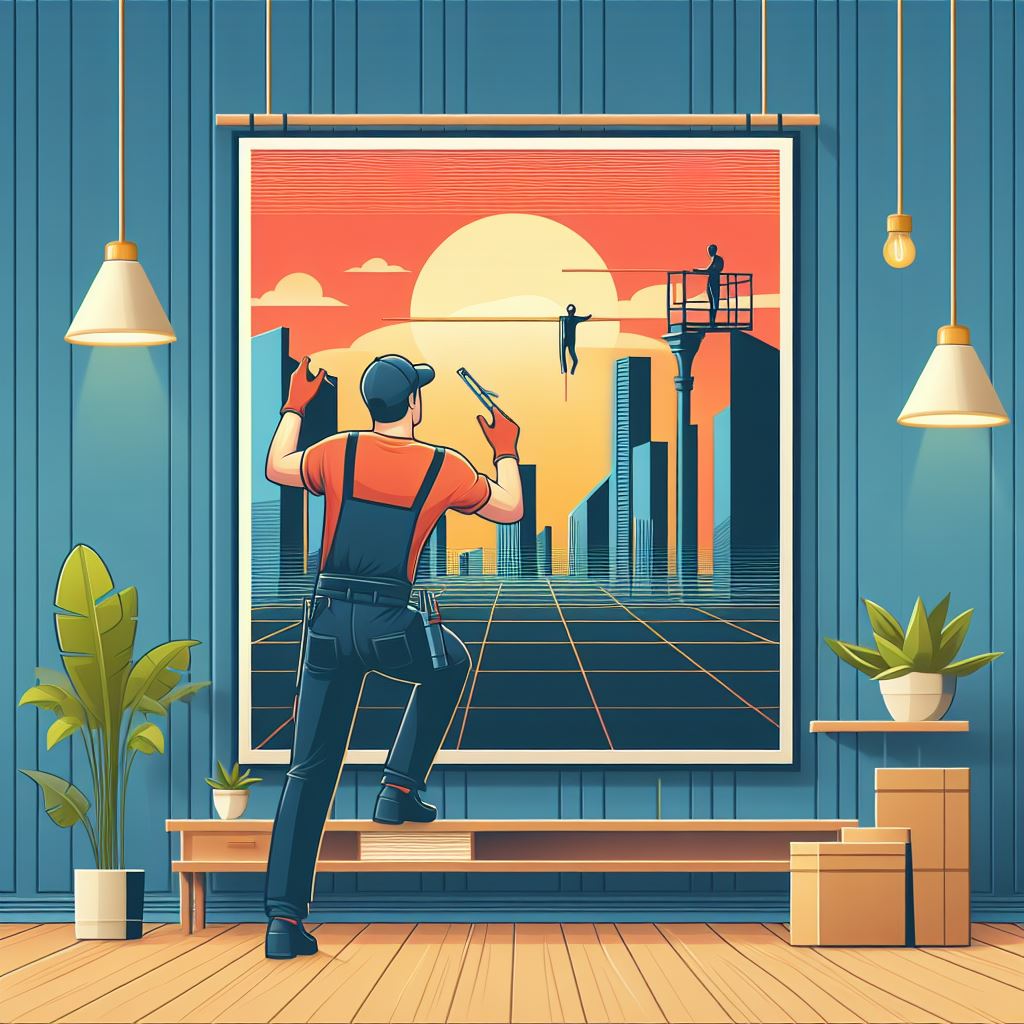Exploring Installation Art: Examples and Insights
Installation art transforms perceptions of space and environment, creating immersive experiences that invite viewers to interact with art in new and dynamic ways. As an evolving form of artistic expression, installation art encompasses a range of materials and methods, often transcending traditional gallery presentations to engage audiences on multiple sensory levels. When exploring what is installation art examples, one might encounter spaces filled with soundscapes, video projections, or mixed media arrangements that challenge the boundaries between art and life.
Notable examples of installation art include Yayoi Kusama’s ‘Infinity Mirror Rooms,’ which create a sense of endless space, and Ai Weiwei’s ‘Sunflower Seeds,’ featuring millions of hand-painted porcelain seeds covering a museum floor. These works exemplify the genre’s power to alter our understanding of environments and provoke thought on cultural and social issues. Installation art is not just about visual impact; it’s an invitation to experience and interpret the world through the artist’s lens.
Understanding the intricacies of installation art requires expertise, especially when it comes to corporate or public displays. TYart, with over two decades of experience in the field, stands ready to assist with your corporate art installation needs in the Houston area, ensuring that the vision behind every piece is fully realized and appreciated. If you have any questions about art services in Houston, please don’t hesitate to reach out to us today. We can be reached by calling 713.869.4044.
The Evolution and History of Installation Art Through the Ages

The roots of installation art can be traced back to the Dada and Surrealist movements of the early 20th century, where artists began experimenting with the presentation and environment of their works. Marcel Duchamp’s readymades and Salvador Dali’s dream-like spaces laid the foundational concepts for what would evolve into contemporary installation art. As the art form progressed, the 1960s and 1970s saw a significant shift with the emergence of artists like Allan Kaprow, whose ‘Happenings’ blurred the lines between art and life, insisting on the viewer’s presence as a vital component of the work.
Later, the influence of Minimalism and Conceptual art further expanded the scope of installation art, emphasizing the idea and process over traditional aesthetics. This period gave rise to seminal works such as Michael Heizer’s ‘Double Negative’ and Walter De Maria’s ‘The Lightning Field,’ both of which utilized vast expanses of land to create site-specific experiences that were both monumental and ephemeral.
Today, installation art continues to evolve, incorporating cutting-edge technologies and interdisciplinary approaches. Artists like Olafur Eliasson and Janet Echelman use light, weather, and urban landscapes to craft experiences that are not only visually arresting but also raise awareness about ecological and social issues. The history of installation art is a testament to the medium’s capacity for innovation and its ongoing dialogue with the spaces and contexts it inhabits.
Defining the Medium: Characteristics of Installation Art

Installation art is distinguished by its use of three-dimensional spaces, transforming the perception of a room or environment through an immersive experience. Unlike traditional paintings or sculptures, installation art is not just about viewing the work from a distance; it invites the audience to enter, explore, and sometimes interact with the art pieces. One of the key characteristics of installation art is its site-specific nature. Artists design these works with a particular location in mind, intending for the piece to be in dialogue with its surroundings.
Another defining feature is its temporal aspect. Many installations are temporary, constructed to exist only for the duration of an exhibition. This transience gives the medium a sense of immediacy and urgency, as viewers have a limited time to experience the work. Moreover, installation art frequently incorporates a variety of materials and mediums. Artists may use anything from found objects to digital technology, creating a multisensory experience that can include visual, auditory, and tactile elements.
Lastly, installation art often aims to provoke thought or elicit an emotional response from its audience. It is not uncommon for installations to be politically or socially charged, challenging viewers to reflect on complex issues. The medium’s flexibility and interactive potential make it a powerful tool for artists to engage with their audience on multiple levels, pushing the boundaries of conventional art forms.
Immersive Examples of Installation Art in Contemporary Practice

The contemporary art scene has witnessed an array of immersive installation art that has captivated audiences worldwide. One notable example is Yayoi Kusama’s Infinity Mirror Rooms, which create a sense of endless space through the strategic use of mirrors and lights. These rooms invite viewers to step into a universe of infinite reflections, a truly immersive experience that has gained widespread popularity on social media.
Another prominent figure is Ai Weiwei, who uses installation art to make bold political statements. His work Sunflower Seeds, which featured millions of hand-painted porcelain seeds spread across the floor of the Tate Modern’s Turbine Hall, invited reflection on mass consumption, Chinese culture, and the value of individuality within a collective society.
Similarly, Olafur Eliasson’s large-scale environmental installations, such as The Weather Project at the Tate Modern, created an indoor sun to explore perceptions of atmosphere and climate. Eliasson’s work often plays with light, shadow, and color to alter viewers’ experiences of space and environment.
These examples illustrate the diverse ways in which contemporary artists utilize installation art to create engaging and thought-provoking environments. By transforming spaces into interactive, multisensory experiences, they encourage viewers to become active participants rather than passive observers, thereby expanding the horizons of what art can be and do.
The Role of Space in Crafting Installation Art Experiences

The success of an installation art piece often hinges on the artist’s ability to comprehend and manipulate space. Space in installation art is not just a backdrop; it is a vital component that interacts with the work to define its meaning and impact. Artists must be attuned to the dimensions, lighting, and existing aesthetics of a location to ensure that their work harmonizes with and enhances the environment.
Ernesto Neto’s work exemplifies the significance of space in installation art. His organic creations often resemble biomorphic forms and are designed to be walked through, within, and around, offering a fully embodied experience. The relationship between the viewer’s body and the surrounding space is integral to the work’s effect, making the space itself a part of the art.
Similarly, Sarah Sze constructs intricate assemblages that extend across walls, floors, and ceilings, drawing viewers into a meticulous labyrinth of objects. Her installations are site-specific, crafted to alter the viewer’s perception of space. They challenge the traditional boundaries of sculpture by engaging the environment as part of the sculptural field itself.
For artists working in installation art, space is an active and dynamic element. It shapes the narrative of the piece, influences its reception, and dictates the physical and emotional journey of the audience. Effective use of space can transport viewers, create new perspectives, and evoke a strong sensory and emotional response, making it a critical factor in the creation of memorable installation art experiences.
Installation Art Beyond the Gallery: Public Spaces and Alternative Venues
Installation art has transcended the conventional gallery walls, venturing out into the open where it interacts with a broader audience in public spaces and alternative venues. This migration has democratized art, making it accessible to those who might not visit galleries or museums. For instance, The Gates by Christo and Jeanne-Claude in New York’s Central Park, and Anish Kapoor’s Cloud Gate in Chicago’s Millennium Park are prime examples that have captivated the public and altered the character of the spaces they inhabit.
Artists are also reclaiming abandoned or non-traditional spaces for installation art, breathing new life into them. Factories, warehouses, and even old churches have become canvases for immersive experiences that blend history, architecture, and art. The scale and context of these unconventional spaces often allow for grander, more audacious works that might be impossible within the confines of traditional galleries.
The blurring of boundaries between art and environment in these spaces can challenge viewers’ preconceptions and encourage a dialogue between the community and the art. Public installations often become landmarks or points of cultural identity, fostering a sense of ownership and pride among local residents.
Need Help With Your Corporate Art Installation? TYart has over two decades of experience in installing Corporate Art throughout the Houston area. Our team understands the intricacies of handling and installing art in a variety of spaces, ensuring your installation captivates and inspires. For consultation and scheduling, reach out to us at tyart.com or call us at 713.869.4044.



